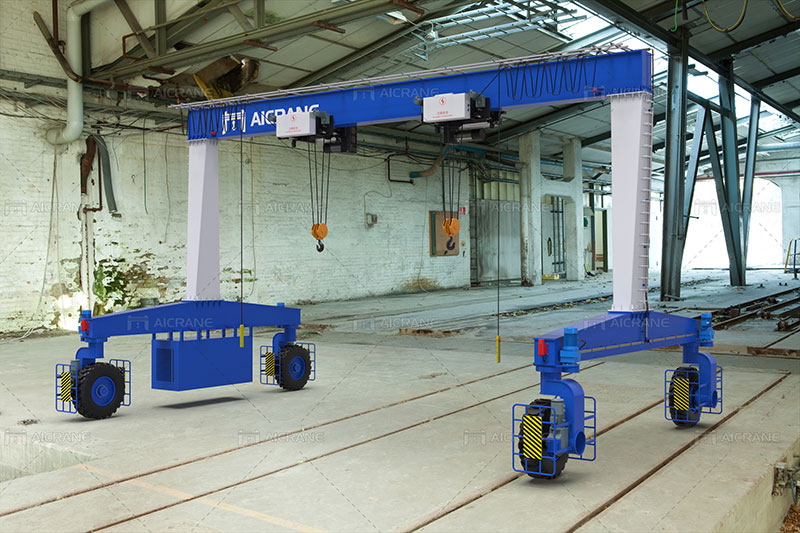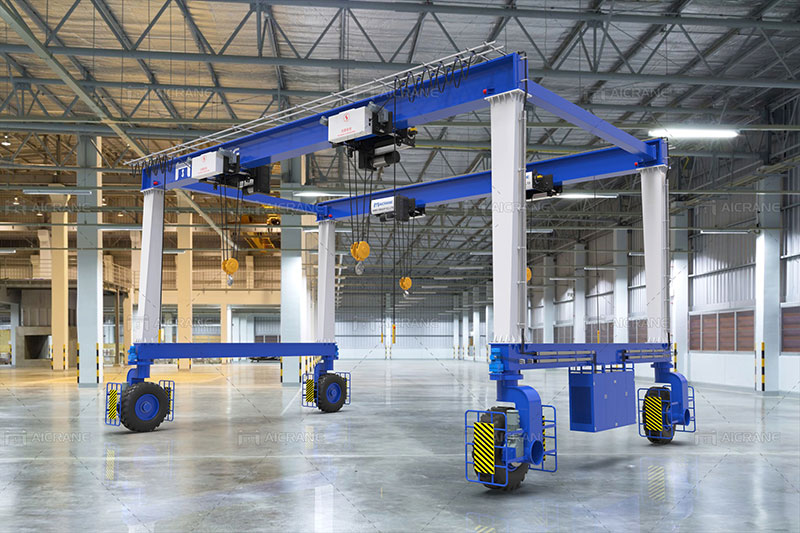The reach of a 30 ton crane, also known as the working radius or boom length, is influenced by several key features. These features determine the crane’s lifting capacity at different distances from its center of rotation. In this passage, we will explore the factors that influence how far a 30 ton crane can reach.

Boom Length
The primary factor affecting the reach of a crane is the length of its boom. Cranes are equipped with extendable booms that allow them to reach varying distances. A longer boom provides a greater working radius, enabling the crane to lift loads further away from its base. The boom length is typically adjustable and can be extended or retracted according to specific lifting requirements.
Load Capacity Chart
Each crane comes with a load capacity chart specific to its design and configuration. The double girder gantry crane usually has high load capacity. This chart outlines the maximum lifting capacity at different boom lengths and working radii. It takes into account factors such as the angle of the boom, the load position, and any additional attachments. By consulting the load capacity chart, operators can determine the maximum reach of the crane while staying within safe working limits.
Counterweight
To maintain stability and balance during lifting operations, cranes are equipped with counterweights. These weights are strategically positioned to offset the load being lifted and prevent the crane from tipping over. The counterweight affects the crane’s overall capacity and its ability to reach certain distances. A larger counterweight allows for a greater reach, as it compensates for the increased load moment caused by extending the boom.
Crane Configuration
The configuration of a crane plays a significant role in determining its reach. Different types of cranes have varying configurations, such as lattice booms, telescopic booms, or articulated booms. Each configuration offers unique advantages and limitations regarding reach. For example, telescopic booms can extend to considerable lengths, allowing for an extended reach, while lattice booms offer excellent strength-to-weight ratios and can reach heights beyond what telescopic booms can achieve.

Boom Angle
The angle at which the boom is positioned also influences the crane’s reach. By adjusting the boom angle, operators can optimize the crane’s lifting capacity at different working radii. Generally, a lower boom angle allows for a greater reach, while a steeper angle reduces the reach but increases lifting capacity. The boom angle should be carefully adjusted to ensure safe and efficient lifting operations.
Outrigger Configuration
Cranes utilize outriggers to provide additional stability when lifting heavy loads. These extendable legs are positioned on the crane’s base and help distribute the weight evenly. The outrigger configuration selected affects the crane’s reach, as it determines the crane’s overall stability and tipping moment. A wider outrigger spread generally results in a reduced reach, while a narrower spread allows for a more extended reach.
Environmental Factors
Various environmental factors can impact the reach of a 30 ton crane. Wind speed, for example, affects the crane’s stability and may limit its reach. In windy conditions, operators need to reduce the working radius or adjust the boom angle to maintain safe lifting operations. Other factors, such as the terrain and ground conditions, also play a role. Unstable or uneven surfaces may restrict the crane’s reach, requiring repositioning or additional support measures.
Additional Attachments
Certain lifting operations may require the use of additional attachments, such as jibs or extensions. These attachments provide extra length beyond the main boom, allowing the gantry crane to reach further distances. However, it is important to consider the load capacity and limitations associated with using such attachments. Manufacturers provide guidelines and load capacity charts specific to these attachments to ensure safe operation.
Operator Skill and Experience
Finally, the skill and experience of the crane operator significantly influence the effective reach of a 30 ton crane. Experienced operators are adept at maximizing the crane’s capabilities while maintaining safety standards. They understand the limitations of the crane and can make informed decisions regarding reach based on load weight, geometry, and environmental conditions.
In conclusion, several features influence how far a 30 ton crane can reach. The boom length, counterweight, crane configuration, boom angle, outrigger configuration, environmental factors, additional attachments, and operator skill all play crucial roles. By considering these factors and referring to the load capacity chart, operators can determine the safe working radius and optimize the crane’s reach while ensuring efficient and secure lifting operations.